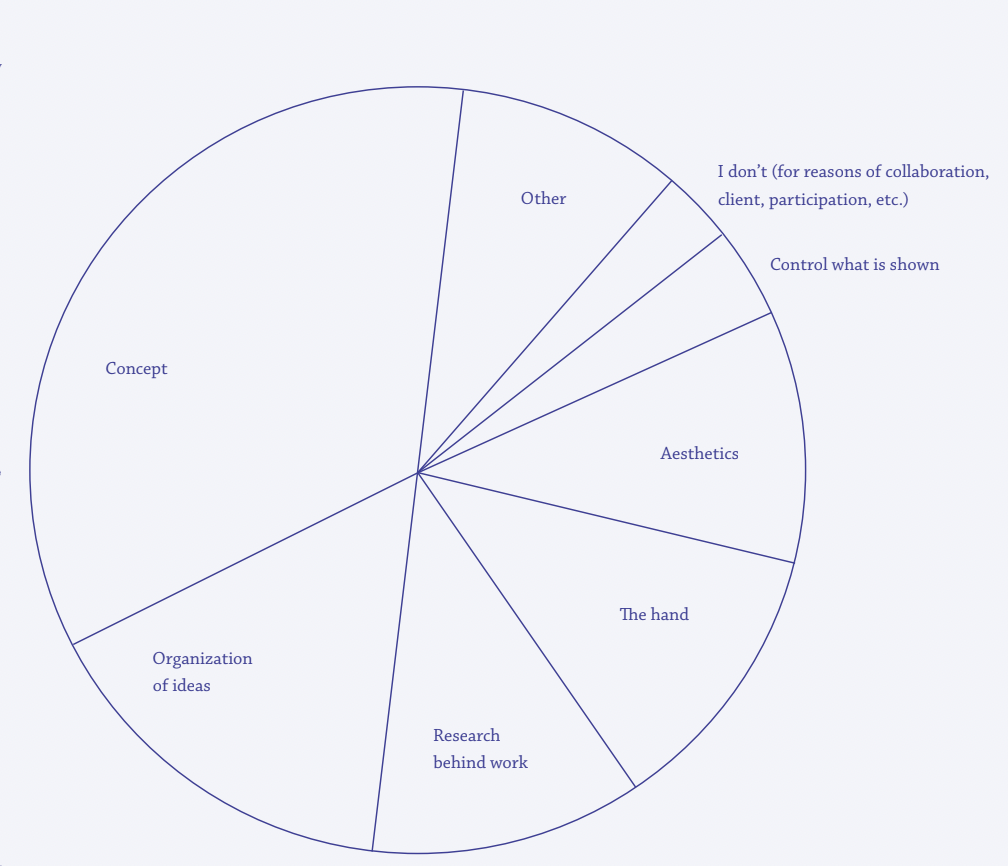How Do You Assert Authorship In Your Work ?
Emily Grego
→ MFA J+M, 2016
Of the many discussions in the Jewelry + Metalsmithing Fall graduate seminar, the one with the least consensus grew from reading Roland Barthes’s The Death of the Author1. Disagreements arose over how authorship manifests in work, whether or not the author should even be important, and ownership of ideas. Admittedly, authorship is particularly difficult to define in art jewelry, a new field coming from a craft where historically the maker is rarely recognized.
After hearing responses from within my own department, I began an investigation into the views of RISD graduate students as a whole by asking the question “How do you assert authorship in your work?”2 Seven possible answers were distilled from previous discussions: concept, organization of ideas, research behind work, the hand, aesthetics, control what is shown, and I don’t.3, 4 The survey was conducted in interdisciplinary seminars and workshops, but primarily at Graduate Open Studios, during which I traveled from studio to studio and surveyed students in all sixteen of RISD’s graduate departments5. In total, 103 graduate students complete the survey.6 The results are shown in the accompanying pie chart.
Of the offered choices, most graduate students surveyed chose concept, claiming that the driving idea/inspiration in their work was the clearest place of their authorship. The second most popular choice was organization of ideas, followed by research behind the work.7 The hand8 and aesthetics9 (fourth and fifth) both refer to the actual physical object. The least popular choices were control what is shown and I don’t. The final section of the graph, indicating other, is included to account for students who completed the survey with objections. 10, 11

Notes:
- I know many writers have responded to Barthes.We read those too, and it didn’t help.
-
In short, I tried to condense a fifty-year criticaldiscourse into a one-question survey. See footnote 11.
-
I wrote “CIRCLE ONE” (see footnote 4) on the survey, yet seven people chose two answers or wrote something else. See footnote 10.
- Some students felt the need to choose more thanone answer despite instruction. Some chose to circletheir principle choice twice and then their otherchoices once. Some numbered their choices; somedrew arrows or diagrams on the survey indicating their choices. One drew a circle around their first choice with other circles slowly rippling out fromaround it to encompass one of the other options. See footnote 11.
-
I feared an emailed survey wouldn’t be responded to, so I printed out 150 copies of the survey and went at it as a street preacher would, approaching my fellow unsuspecting students with my survey, pens, and an overenthusiastic smile.
-
Misleading—only 93 completed it properly.
-
From the hurried discussions incrowded studios and hallways and over increasingly loud music, I gathered that these choices were popular as an acknowledgement that while you can’t claim authorship of any concept, how you interpret an idea can be your own.
-
Many surveyed asked for clarification of “the hand.” I meant thatthe physical act of making shows authorship. Because this is an idea common to craft, I assumed this answer would be popular among those in craft disciplines (glass, metals, ceramics, fibers) but was proven wrong.
-
Clarification was often requested; explained as style.
-
Three people argued insistently that your authorship should be in all seven. Five people chose two answers and one person chose three answers. Another person wrote “decision making” after asserting to me that authorship was in none of the provided options. (Footnote to footnote 10: decision making meaning that authorship is asserted in everytiny decision made throughout the creative process.) I have de-cided to include these responses as they show the flaws in my own survey and the character of the students and school.
-
On reflection, I would not eagerly repeat this experiment. The complexity of the question, my over zealous approach toward groups of complete strangers artists being artists, and libations all combined to leave my fellow graduate students vaguely confused or suspicious of my intentions. At the end of the night returned to my fellow J+M grads to count the results and mutter about art school producing too many creative thinkers.
Author byline.